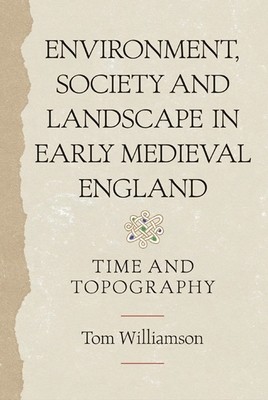
- We will send in 10–14 business days.
- Author: Tom Williamson
- Publisher: Boydell Press
- ISBN-10: 1783270551
- ISBN-13: 9781783270552
- Format: 15.6 x 23.4 x 1.5 cm, softcover
- Language: English
- SAVE -10% with code: EXTRA
Environment, Society and Landscape in Early Medieval England (e-book) (used book) | bookbook.eu
Reviews
Description
The origins of England's regional cultures are here shown to be strongly influenced by the natural environment and geographical features.
The Anglo-Saxon period was crucial in the development of England's character: its language, and much of its landscape and culture, were forged in the period between the fifth and the eleventh centuries. Historians and archaeologists have long been fascinated by its regional variations, by the way in which different parts of the country displayed marked differences in social structures, settlement patterns, and field systems. In this controversial and wide-ranging study, the author argues that such differences were largely a consequence of environmental factors: of the influence of climate, soils and hydrology, and of the patterns of contact and communication engendered by natural topography. He also suggests that such environmental influences have been neglected over recent decades by generations of scholars who are embedded in an urban culture and largely divorced from the natural world; and that an appreciation of the fundamental role of physical geography in shaping human affairs can throw much new light on a number of important debates about early medieval society.The book will be essential reading for all those interestedin the character of the Anglo-Saxon and Scandinavian settlements, in early medieval social and territorial organization, and in the origins of the England's medieval landscapes. Tom Williamson is Professor of LandscapeHistory, University of East Anglia; he has written widely on landscape archaeology, agricultural history, and the history of landscape design.
EXTRA 10 % discount with code: EXTRA
The promotion ends in 20d.08:37:00
The discount code is valid when purchasing from 10 €. Discounts do not stack.
- Author: Tom Williamson
- Publisher: Boydell Press
- ISBN-10: 1783270551
- ISBN-13: 9781783270552
- Format: 15.6 x 23.4 x 1.5 cm, softcover
- Language: English English
The origins of England's regional cultures are here shown to be strongly influenced by the natural environment and geographical features.
The Anglo-Saxon period was crucial in the development of England's character: its language, and much of its landscape and culture, were forged in the period between the fifth and the eleventh centuries. Historians and archaeologists have long been fascinated by its regional variations, by the way in which different parts of the country displayed marked differences in social structures, settlement patterns, and field systems. In this controversial and wide-ranging study, the author argues that such differences were largely a consequence of environmental factors: of the influence of climate, soils and hydrology, and of the patterns of contact and communication engendered by natural topography. He also suggests that such environmental influences have been neglected over recent decades by generations of scholars who are embedded in an urban culture and largely divorced from the natural world; and that an appreciation of the fundamental role of physical geography in shaping human affairs can throw much new light on a number of important debates about early medieval society.The book will be essential reading for all those interestedin the character of the Anglo-Saxon and Scandinavian settlements, in early medieval social and territorial organization, and in the origins of the England's medieval landscapes. Tom Williamson is Professor of LandscapeHistory, University of East Anglia; he has written widely on landscape archaeology, agricultural history, and the history of landscape design.


Reviews